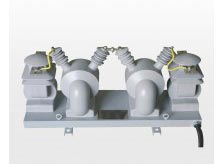
What is CT in switchgear?
Current Transformers are typically used in electrical power systems to provide a scaled-down replica of the current in the high-voltage circuit for measurement and protection purposes. They are commonly installed in series with the circuit being monitored, and the secondary winding of the CT is connected to the instruments or devices that require the current measurement, such as relays, meters, or protection devices.
Measurement: Current Transformers are used to measure current flowing through a circuit, allowing for monitoring and analysis of power consumption, load balancing, and other operational parameters.
Protection: Current Transformers play a crucial role in protective relay schemes. They provide signals to protective relays, which can then detect abnormal current conditions such as overcurrent, undercurrent, or short circuits. These relays can then trip circuit breakers to isolate faulty sections of the power system, preventing damage to equipment and ensuring personnel safety.
Metering: Current Transformers are used in conjunction with instruments such as ammeters and energy meters to accurately measure and record current flow for billing and monitoring purposes.
Overall, Current Transformers are essential components in switchgear systems, enabling accurate measurement, reliable protection, and efficient operation of electrical power systems.
What are the two types of current transformers?
Which current transformer is more accurate?
What is the purpose of a current transformer?
What are the three current transformers?
What does a current transformer do?
What is difference between CT and PT?
How many types of CT transformers are there?
What is the CT in a switch yard?
What does CT mean on breaker box?
What happens if CT secondary is open?
What is the difference between CT and normal transformer?

